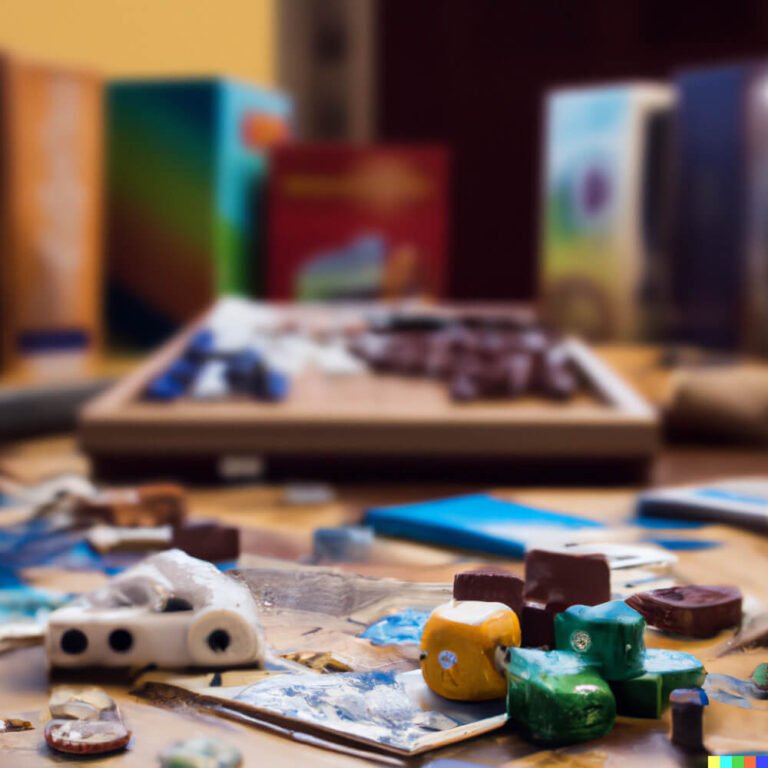When it comes to classic kids board games, Snakes and Ladders is a timeless favorite that has been enjoyed by generations. This iconic game has not only provided hours of entertainment but also valuable life lessons to children around the world. From its humble origins to its global impact, Snakes and Ladders continues to enchant players young and old with its simple yet engaging gameplay.
The history of Snakes and Ladders is as intriguing as the game itself. Understanding how it originated and evolved can provide insight into the cultural significance of this beloved board game. Additionally, delving into the gameplay, rules, educational benefits, strategies, variations, and cultural impact of Snakes and Ladders can offer a comprehensive understanding of why it remains a staple in the world of kids’ entertainment.
In this article, we will explore the fascinating world of Snakes and Ladders, from its early beginnings to its enduring appeal in popular media and literature. Whether you’re new to the game or a seasoned player, there’s always something new to discover about this classic board game that transcends time and culture. Join us as we embark on a journey through the delightful world of Snakes and Ladders.
History of Snakes and Ladders
Snakes and Ladders, also known as Chutes and Ladders, is a classic board game that has been enjoyed by children around the world for generations. In this section, we will explore the origins and evolution of this beloved game, shedding light on its fascinating history.
Ancient Roots
The game of Snakes and Ladders can trace its roots back to ancient India, where it was known as Moksha Patam. The original version of the game was used as a tool to teach moral lessons about karma and destiny. Players would move on a game board representing their journey through life, with ladders representing virtues that lead to success, and snakes representing vices that lead to downfall.
Evolution Over Time
The game eventually made its way to England and was adapted into the version we are familiar with today. The moral teachings were replaced with a simpler focus on chance and luck. The game became a popular pastime for children in Victorian England before spreading to other parts of the world.
Modern Influence
Today, Snakes and Ladders continues to be a popular children’s game, cherished for its simplicity and entertainment value. Its rich history adds depth to what might appear at first glance to be just a simple race-to-the-finish board game. Understanding the origins and evolution of Snakes and Ladders adds an additional layer of appreciation for this timeless classic.
Gameplay and Rules
Snakes and Ladders is a classic board game that has been enjoyed by children for generations. The game is easy to play and requires no special skills or strategy, making it an ideal choice for young kids. In this section, we will explore the basic gameplay and rules of Snakes and Ladders to help you understand how this beloved game is played.
Gameplay
The game of Snakes and Ladders is played on a square board with 100 numbered squares. Players take turns rolling a dice and moving their game piece along the numbered grid. The goal of the game is to be the first player to reach square 100.
Rules
Players start at square 1 and take turns rolling the dice to determine how many squares they can move forward. If a player lands on a square at the bottom of a ladder, they can climb up to the square at the top of the ladder. On the other hand, if a player lands on a square at the head of a snake, they must slide down to the square at the tail of the snake.
Winning
The player who reaches square 100 first is declared the winner. It’s important to note that players must land exactly on square 100 to win – if their roll would take them past square 100, they must wait until their next turn to try again.
Understanding these basic gameplay and rules will allow kids and families to enjoy playing Snakes and Ladders together, making it a fun and memorable experience for all involved. With its simple yet engaging mechanics, it’s no wonder that Snakes and Ladders has remained a popular choice among classic board games for kids.
Educational Benefits for Kids
Snakes and Ladders is not just a fun board game for kids, it also offers numerous educational benefits that can help in the development of various skills. Here are some ways in which playing Snakes and Ladders can enhance learning for kids:
- Counting and Number Recognition: Snakes and Ladders involves moving along the board based on the number rolled on the dice. This helps children with counting and recognizing numbers, as they have to count the spaces they move and identify the corresponding numbers.
- Strategic Thinking: While the game largely depends on luck, there is still an element of decision-making involved when players encounter a ladder or a snake. Children have to think strategically about their next move, considering whether to take a risk or play it safe.
- Patience and Sportsmanship: Playing Snakes and Ladders can teach kids important values such as patience and good sportsmanship. They learn to handle wins and losses graciously, as well as wait their turn without getting frustrated.
- Cognitive Skills: The game also helps in developing cognitive skills such as attention, memory, and problem-solving. Kids have to stay focused on the game, remember where the ladders and snakes are located, and find ways to progress towards the finish line.
In addition to these educational benefits, Snakes and Ladders also offers an opportunity for parents or educators to engage with children in a playful yet instructive way. Overall, this classic board game can be a valuable tool for learning various skills while having fun at the same time.
Strategies and Tips
Snakes and Ladders is a classic board game that has been enjoyed by kids and families for generations. While the game may seem to be based solely on luck, there are some strategies and tips that can increase your chances of winning.
One important strategy is to focus on the numbers that will bring you closer to the finish line, rather than worrying about landing on a ladder or snake. By keeping track of which numbers will move you up the board, you can make more strategic moves and increase your odds of reaching the end first.
Another key tip for winning at Snakes and Ladders is to pay attention to your opponent’s progress. By keeping track of their movements, you can anticipate their next move and strategize accordingly. Additionally, be mindful of the ladders and snakes on the board, as landing on a ladder could give you a significant advantage while landing on a snake could set you back.
Lastly, it’s important to stay positive and have fun while playing Snakes and Ladders. The game is meant to be enjoyable, regardless of who wins or loses. By maintaining a good attitude and focusing on having a good time with friends or family, you’ll truly appreciate the timeless charm of this classic board game.
| Strategy/Tips | Description |
|---|---|
| Focus on advancing numbers | Prioritize moving forward rather than focusing solely on ladders or snakes. |
| Keep track of opponent’s progress | Anticipate their next move based on their position. |
| Maintain a positive attitude | Have fun regardless of winning or losing. |
Variations and Adaptations
Snakes and Ladders, also known as Chutes and Ladders, has been adapted in various forms around the world, each with its unique twist to the classic game. In India, the birthplace of the game, it is called Moksha Patam and is based on traditional Hindu philosophy, with ladders representing virtues and snakes representing vices. The game even has a spiritual significance, teaching players about karma and the consequences of their actions.
In China, a modified version of Snakes and Ladders called “The Climbing Monkey” replaces snakes with monkeys and ladders with ropes. Similarly, in Vietnam, the game is known as “The Tigers and Goats” where tigers represent snakes while goats represent ladders. The variation reflects cultural symbols that are significant to those regions.
Additionally, many digital adaptations have been created over the years. There are now versions of Snakes and Ladders available as mobile apps or online games. These adaptations often incorporate themes such as popular cartoon characters or fictional worlds to appeal to modern kids while retaining the core gameplay mechanics of the original board game.
Overall, these variations highlight how Snakes and Ladders has made an impact globally by being adapted to suit different cultures and preferences while retaining its fundamental concept of progression through virtue or descent through vices.
| Place | Adaptation |
|---|---|
| India | Moksha Patam – Spiritual significance |
| China | The Climbing Monkey – Monkeys and ropes instead of snakes and ladders |
| Vietnam | The Tigers and Goats – Cultural symbols for snakes (tigers) and ladders (goats) |
Cultural Impact
Snakes and Ladders, also known as Chutes and Ladders, has made a significant impact in popular media and literature over the years. This classic board game has been featured in various forms of entertainment, from books to movies. Here are some examples of how Snakes and Ladders has been portrayed in popular culture:
- Books: Snakes and Ladders has been mentioned in several children’s books as a symbol of luck, chance, and the ups and downs of life. It is often used as a metaphor for the challenges that characters face on their journey.
- Movies: In the world of cinema, Snakes and Ladders has been depicted in both animated and live-action films. The game serves as a plot device or can be seen being played by characters in different scenes, adding an element of nostalgia and fun for audiences.
- Television: Snakes and Ladders has also been featured in television shows, ranging from educational programs for kids to sitcoms for adults. Its appearance on TV has helped cement its status as a beloved game across generations.
The cultural impact of Snakes and Ladders extends beyond just being featured in popular media. It has become a symbol that represents the unpredictable nature of life, the concept of karma, and the idea that everyone experiences both success and setbacks. Through its portrayal in various forms of entertainment, it continues to resonate with audiences worldwide, making it a timeless classic beloved by kids and families alike.
Conclusion
In conclusion, Snakes and Ladders continues to captivate the hearts of kids and families worldwide with its timeless charm. This classic board game has stood the test of time, proving to be a favorite pastime for generations. Its simple gameplay, educational benefits, and cultural impact have made it an enduring staple in countless households.
Despite the advancements in technology and the popularity of digital games, Snakes and Ladders remains a beloved choice for many families. Its nostalgic appeal brings people together, providing an opportunity for quality bonding and fun-filled moments. The game’s ability to teach valuable life lessons such as patience, resilience, and the unpredictability of luck makes it a valuable tool for character development in children.
As various versions and adaptations of Snakes and Ladders continue to emerge from different parts of the world, its influence on popular media and literature further solidifies its significance in global culture. Whether it’s portrayed in books, movies, or TV shows, this game has undoubtedly left an indelible mark. Overall, Snakes and Ladders’ enduring appeal lies in its ability to entertain while imparting important lessons – making it a cherished tradition that will most likely continue for years to come.
Frequently Asked Questions
Is There a Standard Snakes and Ladders Board?
The standard Snakes and Ladders board typically consists of a 10×10 grid with numbered squares, featuring ladders that connect certain squares to higher numbers and snakes that connect squares to lower numbers. The starting square is usually numbered 1, and the goal is to reach the final square, often numbered 100, by rolling dice and moving your game piece accordingly.
Can a 4 Year Old Play Snakes and Ladders?
Yes, a 4-year-old can play Snakes and Ladders as it is a simple and easy-to-understand game. The game involves rolling dice, moving game pieces along a board with numbered squares, and climbing ladders or sliding down snakes which makes it an enjoyable learning experience for young children. It helps them develop counting skills and strategic thinking.
How Old Is the Snakes and Ladders Game?
The game of Snakes and Ladders is believed to have originated in ancient India as a moral lesson called “Moksha Patam.” The exact age of the game on its current form is uncertain but variations of this game have been played for centuries across different cultures around the world.
The modern version we know today was first commercially published in England in the late 19th century, indicating its long-standing presence in popular culture.

I love playing all kinds of games – from classics like Monopoly to modern favourites like Ticket to Ride.
I created this blog as a way to share my love of board games with others, and provide information on the latest releases and news in the industry.





